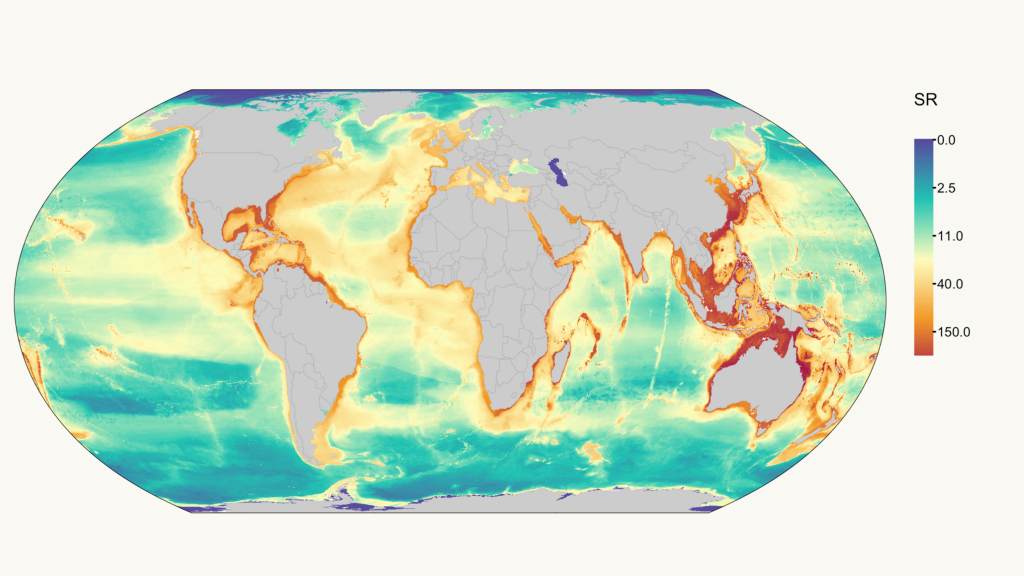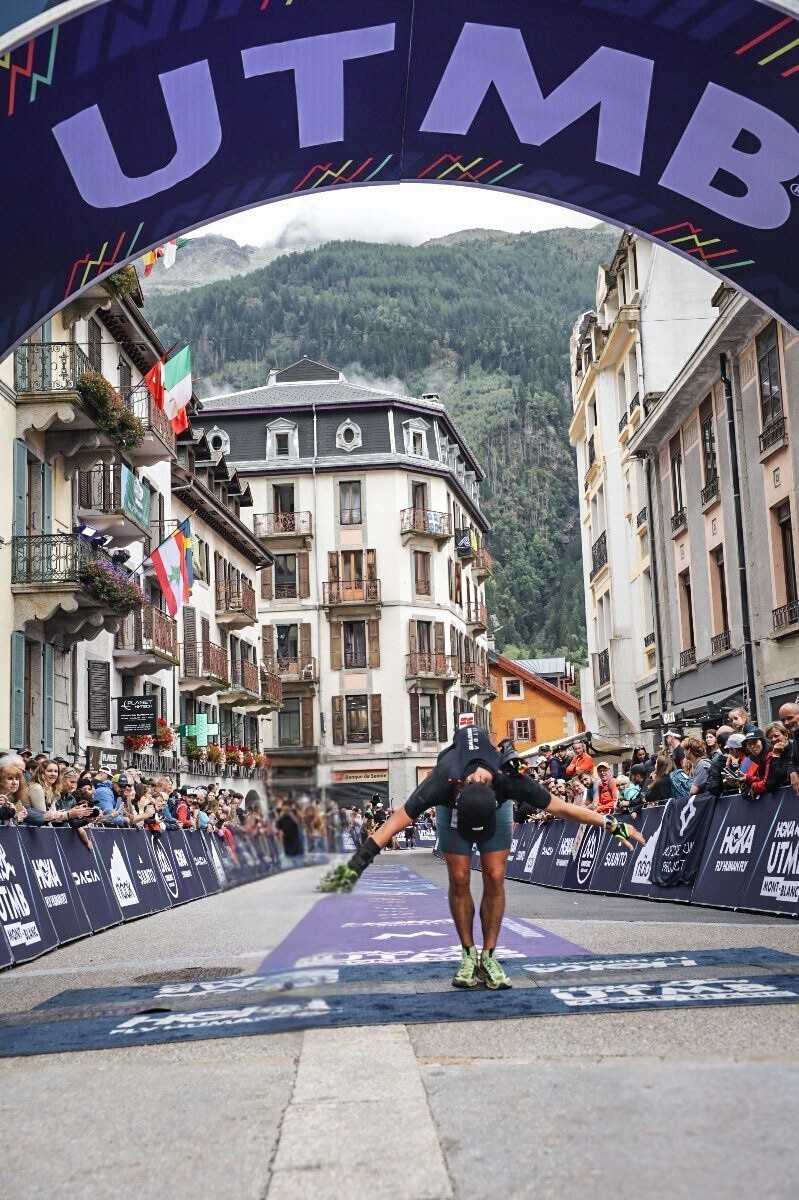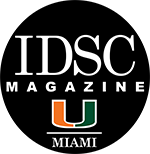When Gabriel Reygondeau joined the University of Miami in a joint appointment at the Frost Institute for Data Science and Computing (IDSC) and the Rosenstiel School of Marine, Atmospheric, and Earth Science, he set out to illuminate how warming ocean temperatures, ocean acidification, and other stressors are reshaping marine ecosystems, so those who depend on them can act.
He is already making major strides.
Thanks to the 445 million simulations he ran on the University’s Pegasus and Triton supercomputers at IDSC continuously over the last six months, Reygondeau has managed to track every marine species on Earth, from plankton to whales, whether they live in oceans, lakes, or rivers.
He also drilled down to a level of detail never before achieved at global scale, a 5-kilometer grid improving the resolution of traditional global maps ten-fold so coastal hotspots become visible. Even more, he can model where these 32,000 species will be living through 2100, with three climate scenarios, as climate change alters their environment.

Map showing the species richness of all ocean life form now at 5.5km resolution.
“It is by far the biggest biodiversity modeled database ever assembled,” said Reygondeau, an associate professor of marine biology and ecology at the Rosenstiel School and IDSC Core Faculty. He noted that without the supercomputers, the model would have taken at least five years, instead of six months. “It can be used for any conservation decision on a global, regional, or even local scale, from the impact of climate change to the impact of exploitation to the impact of pollution.”
International Update in Brussels
Reygondeau presented his models in September at the annual FishBase-SeaLifeBase Symposium in Brussels, Belgium*, explaining how his laboratory AquaX/Aquamaps 2.0 crunches the numbers, with 10 machine-learning algorithms per species, each run between 10 to 15 times, to project present and future distributions. The output filled 10 terabytes of storage.
“We optimized the code and made it as efficient as possible,” he added. “IDSC has been incredible and really made this model happen.”
The launch of AquaX/Aquamaps 2.0 cements the University of Miami’s role as one of only 20 voting members of the FishBase Consortium, the global partnership behind FishBase, SeaLifeBase, and related biodiversity portals that dominate search-engine hits anytime someone Googles a marine animal.
“We can decide on the future of this database,” he said.
His talk, “AquaX: An enhanced and revised AquaMaps methodology to model marine species distributions and biodiversity,” detailed how cutting-edge data science, biological knowledge, and open accessibility combine to create the most detailed, transparent, and actionable global maps of marine species yet.
To help to steer more effective conservation in a rapidly changing ocean, Reygondeau used international data dating back to 1850 to compute the environment species have lived in through the years. Since every marine species has an environmental window where they can live comfortably, where the temperature is tolerable and the food is plentiful, it is a useful tool to understand marine evolution.
“We map the environment to see where the species will be in the future,” he said. “We can predict that because we have modeled future condition available from the work of Dr. Benjamin Kirtman (Dean of the Rosenstiel School). It’s pretty straightforward.”
What’s next?
Reygondeau hopes the AquaX site will go fully live in mid-2026, with bi-annual updates allowing scientists and managers to track change almost in real time. All software will be open-source upon release.
“We don’t hide anything,” he said. “If you think we forgot one species, here is the code!”
Researchers worldwide will be able to upload base data and model outputs, which will automatically feed the next model to sharpen the results for everyone. A prototype “climate-risk dashboard” highlights zones where catch composition could dramatically change within two decades, giving fisheries time to adapt. Case studies for the Atlantic mackerel, skipjack tuna, and Antarctic krill predicted pole-ward range shifts of 150 km to 600 km by 2050, with the model capturing a shift during the hotter years, from 2012 to 2022.
For now, Reygondeau is focusing on fundraising, with a goal of $500,000. A modern web portal that streams terabytes of data to users in low-bandwidth regions isn’t cheap.
“People in Latin America and Africa deserve the same access as those here,” he said. “We want people to use our data in the same way we have it, something that is free and transparent and easy to download.”
Reygondeau also is working on submitting two peer-reviewed publications about the output of the model and its applications. The first will detail the methodology of the 10-model ensemble and its confidence metrics. The second one, he said, will unveil the new hotspots of biodiversity.
“It will show governments the conservation challenges they will have to face in the very near future,” Reygondeau said. “The fisheries will change, and the way you do agriculture will change. If you are a fisherman, Models can help you to know the type of species you might not have in 20 years and the new kind of species you’re going to have because of warming and acidifying oceans. Then they can evaluate the impact on the fishing communities on the local and country scale. They can see how many they’re going to lose or how much they’re going to gain. Then they can decide whether they are willing to take that path.”
‘I like all fish’
Asked to name his favorite fish, Reygondeau can’t choose.
“I like all fish, all life forms, planktons to mammals,” he said emphatically.
His neutrality is intentional. “I’m a scientist,” he said. “I can’t choose which path humanity should take. What I can do is show where species are headed and provide the scientific reasoning behind the consequences of our choices.”
by Lauren Comander
__________
*Just prior to the Symposium, Gabriel competed in the OCC 2025 | HOKA UTMB Mont-Blanc 2025, in Chamonix, France finishing in the top 10!





